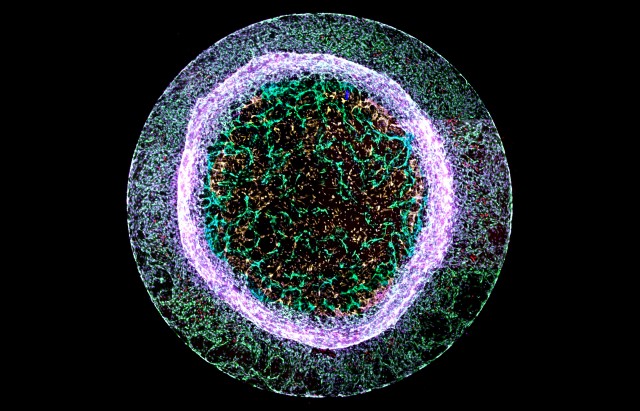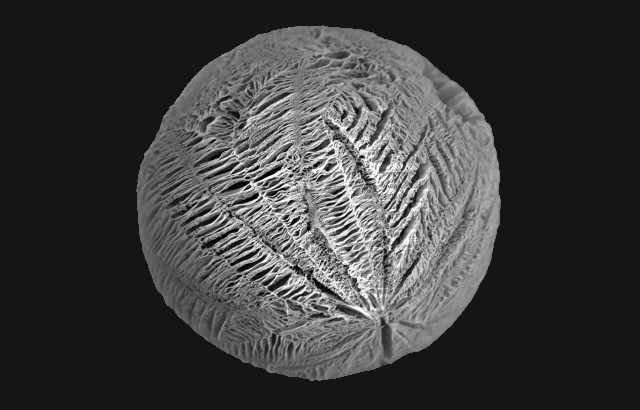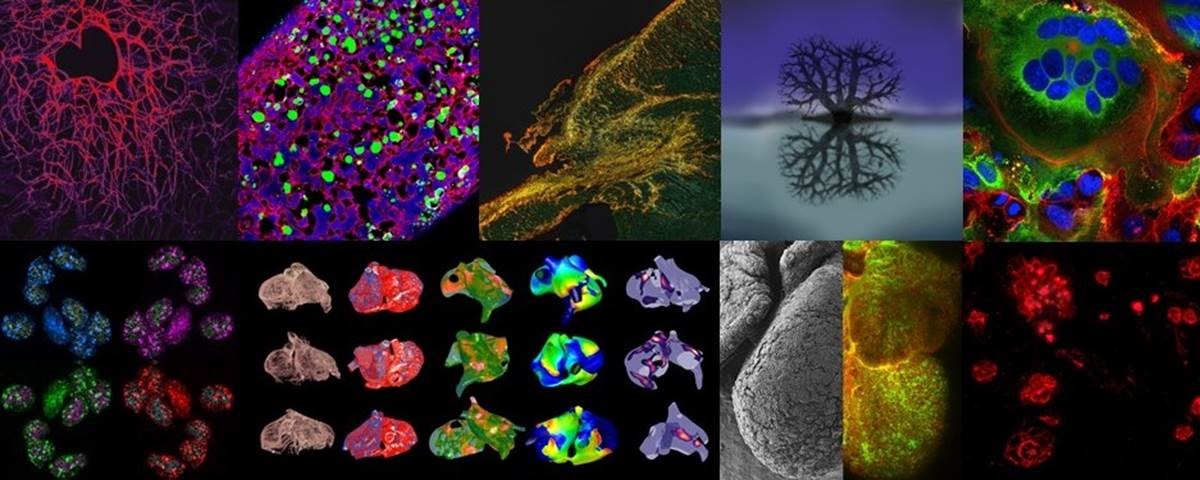

Today we announced the winner of our annual Reflections of Research science image competition. Where science and art collide, the competition challenges scientists funded by us to showcase their state-of-the-art heart and circulatory disease research through captivating images.
Judges’ winner: Recreating heart blood vessels by Dr Elisa Avolio, University of Bristol

Although at first glance it appears to resemble a luminous jelly fish, this image shows new blood vessel-like structures (pictured in green in the centre) sprouting from a 3D gel.
Dr Avolio created the structures using a mixture of two types of heart cells - cardiac endothelial cells, which line the inside of every blood vessel, and pericytes, which ‘hug’ the outside of blood vessels to support the vessel and help it function.
During a heart attack the arteries that supply blood to the heart are blocked, cutting off blood flow. The area of the heart starved of blood and oxygen dies, and it no longer functions to help the heart pump blood around the body.
Dr Avolio, a Post-Doctoral Research Associate at the University of Bristol, is researching ways to encourage the formation of new blood vessels to replace those that have died, to restore blood supply to damaged areas of the heart. By recreating models of the heart blood vessels, she can see how the cells in blood vessel walls interact with other cells. This knowledge could be used in the future to develop new treatments for patients after a heart attack.
Supporters’ Favourite: Biodegradable microspheres to heal hearts by Annalisa Bettini, University College London

Annalisa’s image shows a microsphere, a tiny object made from biodegradable material. Just quarter of a millimetre wide, this state-of-the-art technology is being developed to deliver cells directly to diseased hearts to help them heal.
Over 900,000 people in the UK have heart failure. But more heart attack survivors could mean more people living with the burden of heart failure. For years researchers have been investigating stem cells as a treatment for heart failure to try to restore its function. However, they’ve found that the cells don’t stick or survive in the heart long enough to provide any benefit.
Now, the team at UCL are using microspheres to grow cells and give them a better chance of surviving in the heart. Human stem cell-derived heart cells are cultured on the surface of the microspheres, where they stick to the surface and make connections with their neighbours. The microspheres can then be easily injected into the heart to deliver cells directly to damaged tissue.

One of this year's judges was our Chief Executive, Dr Charmaine Griffiths. She said:
“All of this year’s entries beautifully capture aspects of the heart and circulatory system, bringing to life the challenges that BHF scientists work tirelessly to solve.
“The images show how far we've come over 60 years of BHF research, and would have been barely imaginable to our founders. I love the winning image not just because of its circular beauty, but also because of the hope it represents for the future of healing damaged hearts.”


